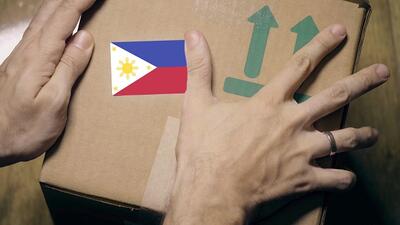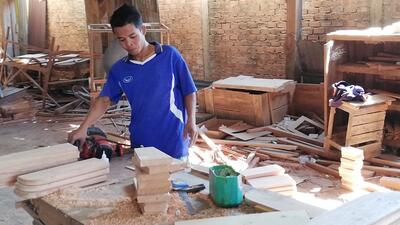Aspiration vs. reality: Local perspectives on regional trade
While certain proponents of global free trade may disagree, regional trade blocs offer a compelling model for economic development. By removing barriers to trade within a region – harmonizing regulation to enable the free flow of goods, services and labour – businesses are able to operate more efficiently and the environment becomes more attractive to foreign direct investment. Trade blocs also create larger, unified markets that can bring more products, services and opportunities to the population, creating a virtuous circle of supply and demand. At least in theory.
As decades of experience have shown, theory and reality don’t always match up. Even when there is the political will to liberalize trade practices and create a free-trade zone, full implementation at the national level can be elusive.
Two of the more advanced trade regions in Africa and Asia have yet to achieve their potential, despite significant progress towards harmonization. The Economic Community of West African States (ECOWAS), founded in 1975, consists of 16 member countries and is arguably the most mature trading region in Africa. The Association of Southeast Asian Nations (ASEAN) was formed in 1967 and today consists of 10 member countries. Despite real achievements by ECOWAS and ASEAN, businesses continue to face a range of non-tariff barriers in both regions.
Impediments to trade in West Africa
Issifu Alhasan is head of customer service for Unilever Ghana, and since 2002 has been responsible for cross-border movement of products and services for the company. He explains that, in Ghana, compliance with ECOWAS rules is overly complex, and that creates a disincentive for Ghanaian companies to trade outside the borders.
‘You cannot just start production once you are established in the subregion,’ Alhasan says. ‘Before you can benefit from free trade in West Africa, you have to register as a company first and then register your products. Even after you have registered, you need to renew every year.’
Even so, registration for cross-border trade completed in one ECOWAS country is not necessarily recognized in other ECOWAS countries, he says. Customs officials may require additional steps, slowing the process and adding to the cost of selling elsewhere in the region.
‘Let’s say you manufacture goods in Nigeria and you want to sell those products in Ghana,’ Alhasan says. ‘You can bring your products to Ghana and just start selling. You cannot do the same from Ghana to Nigeria. Nigeria has a procedure that includes an inspection of your company, another registration step, and issuing a permit for mass production. This takes a minimum of six months. So that does not give me an incentive to manufacture for the Nigerian market outside Nigeria.’
For reasons such as this, most small-scale producers choose not to register, and the greater ECOWAS subregion is not available to them as a market.
Fighting inertia
Bureaucratic barriers aside, trade in West Africa is not entirely free, even for traders who have registered their companies and products properly. Official and unofficial charges are commonly levied by authorities at borders and checkpoints along trade corridors. According to the 15th Improved Road Transport Governance report, covering January-March 2011, lorries in the Côte d’Ivoire were required to pay, on average, US$ 21.44 in bribes and pass through 3.8 controls every 100 kilometers on the route between Abidjan and countries to the North.
‘Transit charges for some West African countries are so high, you might as well be paying duty,’ Alhasan says. ‘Import duty is zero, but the other charges you pay are ridiculous, and it’s driving a lot of trade away within the subregion.’
Ziad Hamoui, interim president of the Borderless Alliance, a non-profit organization that advocates free movement of goods and people across West Africa, sees this as a solvable problem. ‘Information exchange is necessary to expose malpractice. Most authorities at the higher level are unaware of the real practices along the corridors. Once they are aware of the impediments to trade, they act swiftly to abolish it. Once you show the problem, deal with the problem, and implement some kind of change, governments and traders are more likely to change. So the answer is mostly about improving visibility across the corridors, either from the public-sector or private-sector point of view.’
That said, he acknowledges that current practices, which are illegal by ECOWAS standards, are entrenched. A serious inhibitor to free trade across West Africa, Hamoui points out, is that there are as many potential losers as winners. For example, free and open borders will make professional trucking companies more efficient and cost-effective, putting a large proportion of informal-economy truck drivers out of business.
‘Until you have the political will to change the system into a more efficient one, and to reconvert whoever is left out into a more productive role, that system will be difficult to instil,’ he says. ‘The system is static because everyone inside the system feels safe in their comfort zone – except the consumers who are paying more. Producers and distributors and other service providers simply push their costs along.’
Caught in the middle-income trap
In Southeast Asia, ASEAN faces its own difficulties with implementation. Globalization and the rise of the Chinese and Indian economies have put immense competitive pressure on the region.
‘If you talk about palm oil or petroleum or tea, these are the natural resource-based areas where we are competitive,’ says OK Lee, chairman of the Penang branch of the Federation of Malaysian Manufacturers (FMM). ‘But for manufactured products, every country can be a competitor.’
Overall, Malaysia is a very open market, with exports approaching 200% of GDP. For the past two decades, Lee says, it has been steadily promoting industrial investment and there are few barriers to setting up a business. But this openness has come at a cost. Rapid growth has driven low unemployment, but this has not been matched by significantly higher wages or led to a surge in home-grown innovation.
‘Currently, Malaysia is only manufacturing products for others, according to others’ designs,’ Lee says. ‘We are short on branding and international marketing skills – short of the ability to have our own technology. We are trying to increase the minimum wage, but if you do it too fast, you make a lot of manufacturing companies less competitive. So it’s not easy for us to get out of this middle-income trap.’
One outcome of this vicious economic circle is that Malaysia’s best and brightest people are too often wooed away to other countries for better paying jobs. ‘We have a big issue with brain drain, as many good people are enticed away for better paying work in Singapore, China, Australia and elsewhere,’ Lee says. ‘We do attract a lot of low-cost labour from Indonesia and other ASEAN countries, but they are involved in manufacturing and are not highly paid. So the Malaysian government has formed a talent corps, trying to recruit Malaysian talent back into the country.’
Barriers to trade are everywhere you look, Lee says, citing standards as the most commonly used non-tariff barrier in global trade. ‘We don’t have mutually recognized agreements (MRAs) on most standards. For example, we were badly hit over the past two years in the export of frozen seafood to Europe because we could not comply with all of the European Union requirements. The advantage went to Thailand, which was better prepared than Malaysia. So there is a question about whether international standards are 100% fair and equitable.’
Malaysia is not above criticism in its implementation of ASEAN rules. It has drawn the wrath of all ASEAN members, Lee says, for protecting its national car, the Proton, by applying tariffs and duties. According to Market Access Map, an ITC-developed database and tool for the analysis of customs tariffs worldwide, the tariffs applied by Malaysia to imported passenger vehicles are, for most tariff lines, significantly higher than those applied by Europe, Japan and Australia. And so, Lee says, despite Malaysia having the largest car market in the region, protectionist policies in the automotive industry have undermined the healthy influence of the free market and the country has lost an opportunity to be an automotive leader in the region.
Pragmatic optimism for regional free trade
Perhaps it is predictable that business leaders would decry anything that impedes their ability to operate profitably and compete fairly. So their complaints of local barriers to trade are understandable, even as they applaud the objectives of ECOWAS and ASEAN. So what do these businessmen think about the future? Is there any hope to achieve the ultimate vision of an economic free-trade area in their region?
‘I don’t think the failures of ASEAN are political,’ Lee says. ‘Economic pressures have forced countries to do something, especially with China and India coming up so strong. The ASEAN region has a population of 560 million, possibly 600 million. If we can allow free trade among this group, we will be able to attract, like China because it is such a huge market, a lot of foreign direct investment.’
‘I am optimistic because West Africa is an area rich in resources, with a lot of intelligent and well-educated people,’ Hamoui says. ‘Ultimately, some policies will have to be put in place regardless of whether politicians like it or not. I think it’s better to start preparing for that moment now, rather than reaching it fully unprepared. Advocacy for best practice and pulling down malpractice is a good way to start for the time being.’
‘If we have the mindset to make the change tomorrow, we can do it,’ Alhasan says. ‘But ultimately it’s up to the people. ECOWAS has very good policies that have been signed off by the right people. But what we need is consistency and self discipline. Without that, we cannot make any headway.’





